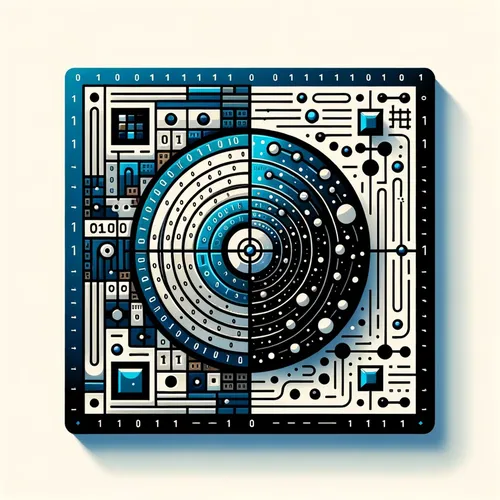Quantum Error Correction Breakthrough: Unleashing Practical Quantum Computing for All
- Author
- Quiet. Please
- Published
- Tue 13 May 2025
- Episode Link
- https://www.spreaker.com/episode/quantum-error-correction-breakthrough-unleashing-practical-quantum-computing-for-all--66072206
This is your Quantum Bits: Beginner's Guide podcast.
If you stood in the sealed, soundless lab at Quantinuum just last week, you’d have felt it: that low current of anticipation, the eerie hum of possibilities zipping through the cryostats. That environment—cold, sterile, yet alive with the dance of quantum states—summed up the moment. I’m Leo, your Learning Enhanced Operator, and this is Quantum Bits: Beginner’s Guide. Today, I’m thrilled to pull back the curtain on the latest breakthrough that’s making quantum computers not just more powerful, but finally—practically—easier to use for people like you.
A few days ago, industry headlines buzzed with the confirmation: the new error-corrected logical qubit arrays, pioneered by teams at Google and Quantinuum, are outperforming expectations, slashing error rates even as they scale up. This may sound abstract, but here’s the drama: as you add more qubits to a quantum processor, like musicians crowding onto a tiny stage, each brings its own discord—errors that add up and threaten to drown out the entire performance. For years, quantum code-breakers and physicists have grappled with the question: Can we really coordinate this wild ensemble, or will noise overwhelm the signal?
Google’s latest experiment answered with a resounding yes. Instead of error exploding with scale, their clever error correction framework actually dampens it. Imagine if every new violinist made the orchestra more in-tune rather than less. This flips the script on what’s possible—suddenly, we’re seeing robust, large-scale quantum processors that don’t buckle under their own complexity. And that, my friends, is the kind of technical victory that gets a quantum purist like me out of bed in the morning.
Let’s get tactile for a moment. Inside a quantum chip cooled close to absolute zero, you’ve got qubits—these fragile quantum bits, spinning in a delicately balanced superposition. Picture them as tiny coins, resting not on heads or tails, but both at once, and you’re trying to stack hundreds, maybe thousands, in a tower that won’t topple. It’s the error correction algorithms, honed in recent months, that act as the unseen hands keeping that tower upright, correcting tiny nudges before they become catastrophic falls.
These advances in error correction are more than academic. In March, Quantinuum unveiled a logical qubit platform that links real-world quantum hardware to software tools accessible by non-specialists. That means we’re seeing the dawn of systems where programmers—students, entrepreneurs, creative thinkers—can write quantum code without needing a PhD in quantum mechanics. You’ll soon be able to run highly specialized quantum algorithms, in fields from AI to material science, without wrestling with the qubit equivalents of static, echo, or missed notes.
It’s no exaggeration to say we are watching the practical era of quantum computing unfold. Microsoft, IBM, and cloud providers are now racing to open up their quantum hardware via intuitive programming environments, and the guidance is clear: 2025 is the year to become quantum-ready. Hybrid classical-quantum applications are on the immediate horizon, with the likes of Azure Quantum inviting experimentation from a broader audience each day.
Why does this matter beyond the lab and the headlines? Quantum computers—now more reliable thanks to these error correction breakthroughs—promise to revolutionize everything from cryptography to drug discovery, finance to climate modeling. The impact won’t just be on the server racks tucked away in pristine facilities, but rippling across supply chains, medical research, and the very algorithms that predict the weather.
I like to think of these error-corrected qubits as the trustworthy correspondents in a world beset by misinformation—if you can’t rely on the signal, the message is lost. Thanks to the work of brilliant teams at...
